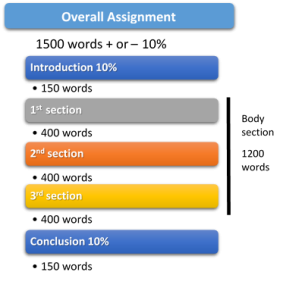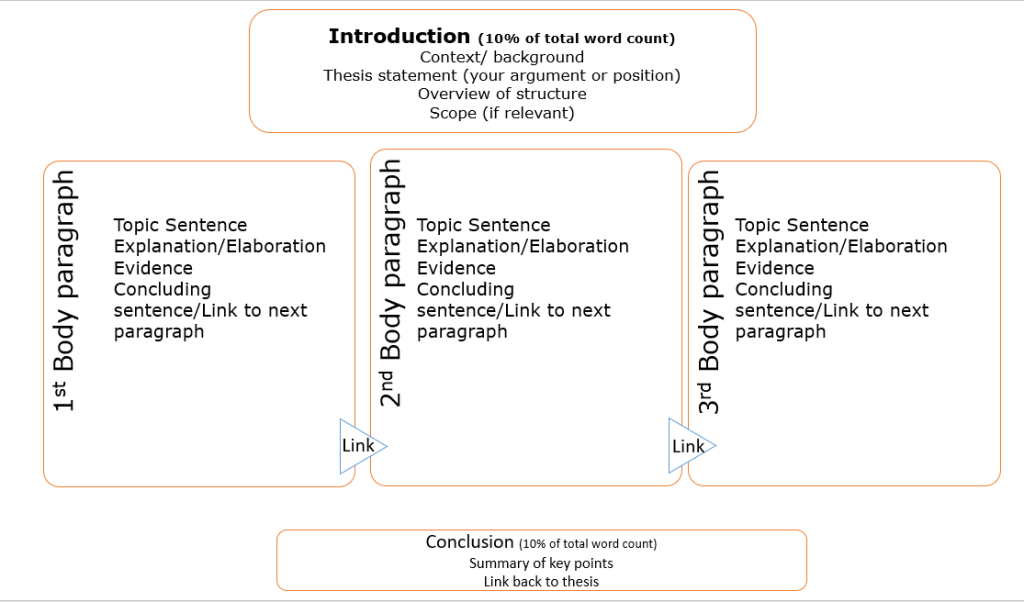Types of Essays

Introduction
Assignments are a common method of assessment in post-secondary education. You may encounter many assignments over your years of study, yet some will look quite different from others. By recognizing different types of assignments and understanding the purpose of the task, you can direct your writing skills effectively to meet task requirements.
The chapter explores the popular essay assignment, with its two common categories, analytical and argumentative essays; we will concentrate our efforts on the analytical essay.
Types of Written Essays
An essay is a common form of assessment in degree programs. It is important that you consider aspects of structure, tone and language when writing an essay.
Components of an essay
Essays should use formal but reader friendly language and have a clear and logical structure. They must include research from credible academic sources such as peer reviewed journal articles and textbooks. This research should be referenced throughout your essay to support your ideas.

If you have never written an essay before, you may feel unsure about how to start. Breaking your essay into sections and allocating words accordingly will make this process more manageable and will make planning the overall essay structure much easier.
- An essay requires an introduction, body paragraphs and a conclusion.
- Generally, an introduction and conclusion are approximately 10% each of the total word count.
- The remaining words can then be divided into sections and a paragraph allowed for each area of content you need to cover.
- Use your task and criteria sheet to decide what content needs to be in your plan.
An effective essay introduction needs to inform your reader by doing four basic things:
- Engage their interest and provide a brief background of the topic.
- Provide a thesis statement. This is the position or argument you will adopt. (Note: a thesis statement is not always required. Check with your instructor if you’re unsure).
- Outline the structure of the essay.
- Indicate any parameters or scope that will/will not be covered.
An effective essay body paragraph needs to:
- State the topic sentence or main point of the paragraph. If you have a thesis statement, the topic sentence should relate to this.
- Expand this main idea, define any terminology and explain concepts in more depth.
- This information should be paraphrased and referenced from credible sources according to the appropriate referencing style of your course.
- Demonstrate critical thinking by showing the relationship of the point you are making and the evidence you have included. This is where you introduce your “student voice”. Ask yourself the “So what?” question (as outlined in the critical thinking section) to add a discussion or interpretation of the how evidence you have included in your paragraph is relevant to your topic.
- Conclude your idea and link to your next point.
An effective essay conclusion needs to:
- Summarize or state the main points covered, using past tense.
- Provide an overall conclusion that relates to the thesis statement or position you raised in your introduction.
- Not add any new information.

Elements of essay in diagram (Text Version)
Introduction
- 10% of total word count
- Context/background
- Thesis statement (your argument or position)
- Overview of structure
- Scope (if relevant)
First Body Paragraph
- Topic sentence
- Explanation/Elaboration
- Evidence
- Concluding sentence/Link to the next paragraph.
Second Body Paragraph
- Topic sentence
- Explanation/Elaboration
- Evidence
- Concluding sentence/Link to the next paragraph.
Third Body Paragraph
- Topic sentence
- Explanation/Elaboration
- Evidence
- Concluding sentence/Link to the next paragraph.
Conclusion
- 10% of total word count
- Summary of key points
- Link back to thesis
Common types of essays
You may be required to write different types of essays, depending on your study area and topic. Two of the most commonly used essays are analytical and argumentative. Determine the type of essay required. For example, if your assignment question uses task words such as analyze, examine, discuss, determine or explore, you would be writing an analytical essay. If your assignment question has task words such as argue, evaluate, justify or assess, you would be writing an argumentative essay. Despite the type of essay, your ability to analyze and think critically is important and common across genres.
Analytical essays

We will focus on writing analytical essays. These essays usually provide some background description of the relevant theory, situation, problem, case, image etc. that is your topic. Being analytical requires you to look carefully at various components or sections of your topic in a methodical and logical way to create understanding.
The purpose of the analytical essay is to demonstrate your ability to examine the topic thoroughly. This requires you to go deeper than the description by considering different sides of the situation, comparing and contrasting a variety of theories and the positives and negatives of the topic. Although in an analytical essay your position on the topic may be clear, it is not necessarily a requirement that you explicitly identify this with a thesis statement, as is the case with an argumentative essay. If you are unsure whether you are required to take a position, and provide a thesis statement, it is best to check with your instructor.
Review APA Style
When writing your paper, you will have to use APA Style to cite and reference sources. Take a look at the videos listed below to review APA Style formatting, citing and referencing.
Check Your Understanding: APA Videos
Use the interactive slides below to watch the 5 YouTube videos and learn more about APA Style:
Georgian College APA Videos (Text Version)
Watch What is APA? (2:30 minutes) on YouTube
Watch APA title page and paper format (2:45 minutes) on YouTube
Watch APA references (10 minutes) on YouTube
Watch APA in-text citations (9 minutes) on YouTube
Watch Introduction to APA citation style workshop (24 minutes) on YouTube
Activity source: “Georgian College APA Videos” H5P activity created by Jessica Jones and oeratgc, licensed under CC-BY-NC-SA, except where otherwise noted.
Attribution & References
Except where otherwise noted, this chapter is adapted from “Types of Assignments” In Academic Success by Cristy Bartlett and Kate Derrington, licensed under CC BY-NC-SA 4.0. / A derivative of College Success by Amy Baldwin, University of Central Arkansas used under a Creative Commons Attribution 4.0 license and available from OpenStax. / Adaptations include:
- Removal of argumentative essays, case study responses, report, reflective writing, annotated biography, key points.
- Addition of Georgian College APA Style videos
Original References
Gibbs, G. (1988). Learning by doing: A guide to teaching and learning methods. Further Education Unit, Oxford Brookes University, Oxford.
Rolfe, G., Freshwater, D., Jasper, M. (2001). Critical reflection in nursing and the helping professions: a user’s guide. Basingstoke: Palgrave Macmillan.
Ryan, M. & Ryan, M. (2013). Theorising a model for teaching and assessing reflective learning in higher education. Higher Education Research & Development, 32(2), 244-257. doi: 10.1080/07294360.2012.661704

